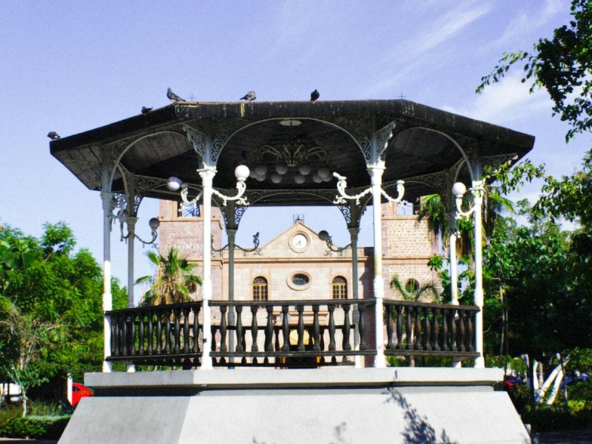Baja California Sur is known for its beautiful coastlines, serene beaches, and unique desert landscapes. But for residents and potential movers to this idyllic region, understanding its hurricane history, especially in 2024, is key to making informed decisions. This article takes a closer look at the hurricane track record in Baja California Sur, the effects on the region, and how it compares to other hurricane-prone areas in Mexico.
2024 Hurricane Season Overview in Baja California Sur
As of 2024, Baja California Sur has experienced several hurricane events, underscoring the region’s susceptibility to tropical storms. This year’s hurricane season has seen multiple storms making landfall in or near Baja, with significant impacts. According to data from CONAGUA, hurricanes such as Hurricane Pilar and Tropical Storm Tico caused considerable disruption, bringing heavy rains, strong winds, and coastal flooding.
The 2024 season has shown:
- Landfall Count: Three significant storms, including one major hurricane, made landfall near Baja California Sur.
- Winds and Rains: Wind speeds peaked at 130 mph in some areas, with localized rainfall reaching over 200 mm in a short period.
- Infrastructure Damage: Approximately $40 million USD in material damages, with the primary impacts being roof damage, broken windows, and downed power lines.
The material destruction data reflect Baja California Sur’s preparedness and resilience. Many structures, particularly in La Paz and Los Cabos, are built with hurricanes in mind, which helps minimize damage compared to other regions.
Impact of Hurricanes on Baja California Sur’s Infrastructure
In 2024, the material destruction from hurricanes in Baja has been less severe compared to other regions in Mexico. Due to updated building codes, particularly in major cities like La Paz and Cabo San Lucas, the infrastructure has shown increased resistance. However, rural areas and small communities still face significant challenges.
Notable damage in Baja California Sur has included:
- Roof Damage: About 10% of residential structures in Los Cabos suffered roof damage due to high winds.
- Flooding: Heavy rainfall led to flooding in low-lying areas. An estimated 300 homes were temporarily uninhabitable.
- Utility Disruptions: Power outages lasted between 12 to 48 hours in affected areas, impacting over 30,000 residents.
Comparing Baja California Sur with Other Hurricane-Prone Mexican Regions
When comparing Baja California Sur’s hurricane track record and the related destruction data to other regions, a few key differences emerge:
- Yucatán Peninsula (Quintana Roo and Yucatán)
- The Yucatán Peninsula, including areas like Cancún and Playa del Carmen, often experiences more frequent and intense hurricanes. In 2024, Hurricane Yolanda caused damages estimated at $150 million USD, with flooding affecting large urban areas.
- Compared to Baja, where infrastructure is better adapted to high winds, the Yucatán experiences more flood-related damage, as the region receives heavier rainfall.
- Gulf of Mexico (Tamaulipas and Veracruz)
- The Gulf Coast regions, such as Tamaulipas and Veracruz, saw multiple hurricane impacts in 2024. Storm surges are more common here, with damages to coastal infrastructure and local businesses reaching nearly $200 million USD.
- In contrast, Baja California Sur, while impacted by coastal flooding, tends to experience fewer destructive surges due to its geography and coastal barriers.
- Pacific Coast (Oaxaca and Guerrero)
- The Pacific Coast, notably Oaxaca and Guerrero, often sees heavy rains and landslides. In 2024, Hurricane Manuel led to landslides and infrastructure damage amounting to $100 million USD.
- Baja California Sur generally has fewer issues with landslides, as its desert terrain is less prone to such risks. However, flash floods can still pose a significant threat.
Preparedness in Baja California Sur: A Model for Resilience
Baja California Sur has taken steps to improve its resilience to hurricanes, focusing on disaster preparedness and building community awareness. The state government has also invested in early warning systems and emergency response capabilities, ensuring that communities are well-prepared to deal with hurricanes.
Key Preparedness Initiatives Include:
- Evacuation Plans: Clearly marked evacuation routes and shelters are readily available across La Paz, Cabo San Lucas, and other major towns.
- Public Awareness Campaigns: Ongoing efforts to educate residents on hurricane preparedness help minimize personal risk and property damage.
- Building Codes: Structures in high-risk zones are required to meet standards that withstand wind speeds of up to 130 mph.
Why Choose Baja California Sur?
Despite the hurricane activity, Baja California Sur remains a desirable place to live and visit due to its natural beauty and lifestyle advantages. The region’s commitment to safety and preparedness enhances its appeal, providing peace of mind for residents. Plus, the relatively lower frequency of severe hurricanes compared to regions like the Yucatán makes it an attractive option for those seeking coastal living with fewer storm-related disruptions.
For more on life, real estate, and opportunities in Baja California Sur, visit SouthBajaLife—your comprehensive directory for everything Baja.




